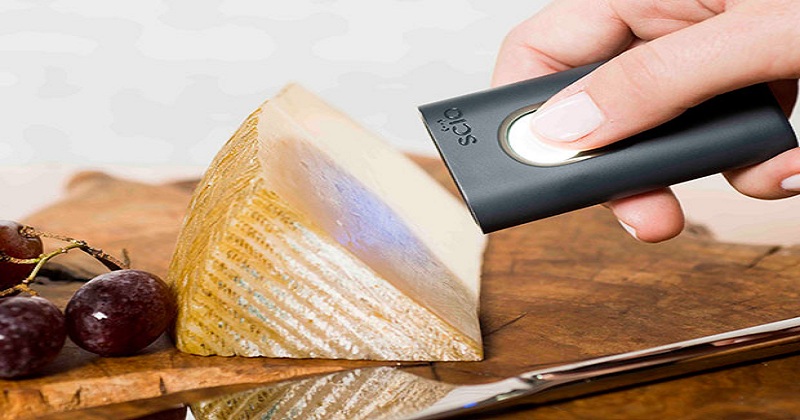
A mobile food scanner, a pocket- size device will allow the consumers to test the quality of a food.It means, it will help to identify whether the food is good or not. The device will be available in the near future. The pocket-size device uses infrared measurements to determine the ripeness and shelf life of produce and display the results via an app.
Fraunhofer researchers developed the system, which exists in demonstrator form, together with partners in a project commissioned by the Bavarian Ministry of Food, Agriculture and Forestry. According to a study by the environmental organization WWF Germany, ten million metric tons of food are thrown in the garbage every year in Germany. The new device will hopefully help to avoid such sitauations. It is reported that In Bavaria alone, 1.3 million tons of food wind up in the garbage unnecessarily every year. Through the “We Rescue Food” alliance, the Bavarian Ministry of Food, Agriculture and Forestry wants to combat waste by means of 17 initiatives.
Researchers at the Fraunhofer Institute for Optronics, System Technologies and Image Exploitation IOSB, the Fraunhofer Institute for Process Engineering and Packaging IVV, the Deggendorf Institute of Technology and the Weihenstephan-Triesdorf University of Applied Sciences are developing the compact food scanner, which has been built as a demonstrator with data for two foodstuffs and also permits the shelf life of products to be estimated. Highlight of this technology is that it uses an infrared sensor that checks ripeness of the food and the amount and composition of its content. “Infrared light is beamed with high precision at the product to be investigated and then the scanner measures the spectrum of the reflected light. The absorbed wavelengths allow us to make inferences about the chemical composition of the food,” explains Dr. Robin Gruna, project manager and scientist at Fraunhofer IOSB.
“Foodstuffs are often counterfeited – for example, salmon trout is sold as salmon. Once suitably trained, our device can determine the authenticity of a product. It can also identify whether products such as olive oil have been adulterated,” says a team member of Gruna. The device has limitations too. It can only evaluate the product quality of homogeneous foods. It is difficult to inspect heterogeneous products containing different ingredients. The scientists are in search to find a solution.

Post Your Comments